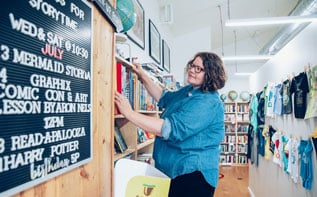- Home
- Environmental Services
- Water Resources Division
- Rain Gardens
Rain Gardens
Rain gardens are vegetated, shallow, bowl-shaped landscape features that absorb runoff from roofs and driveways.
Rain gardens fill with a few inches of water after a storm, then filter the water into the ground instead of to storm drains. They naturally protect our water sources and look great.
Resources
- Build a Rain Garden
- Maintain a Rain Garden
Steps to build a rain garden
Plan
- Contact the City to determine your soil, slope and available space is suitable for a rain garden.
- Confirm your property is in an area of Gresham with well-drained soil on the GreshamView map. Select "Incentive and Grant Eligible Areas" in map layers, then click the box for downspout disconnection and rain gardens.
- Call 811 for utility locates. Confirm the location of existing utilities and avoid conflicts. Oregon Utility Notification Center
- Ensure there is enough space between your property line and neighboring properties and sidewalks.
- Test your soil drainage rate.
- East Multnomah County Water Conservation District offers grants funds to build a rain garden.
Build
- Lay out your garden using stakes, rope, and other tools.
- Excavate the soil.
- Create an entry for water, an extended rain gutter or downspout.
- Use a compost mix to blend into existing soil.
- Provide rock-lined overflow.
Plant
- Line your garden with weed barrier before planting.
- Space plants for mature size but consider planting densely in the ponding area.
- Plant drought tolerant plants on the garden’s outer edge.
- Use native plants. Native Oregon plants are adapted to local weather, pests and disease and don’t require fertilizers, pesticides or water once established.
Maintain
- Keep inlet and overflow clear of debris and well-protected rock.
- Don’t use fertilizers, pesticides or herbicides.
- Provide additional mulch as needed.
Community rain garden FAQ
Rain gardens are installed in Pleasant Valley and new Springwater communities to support nature-friendly communities that use plants and soil to remove road pollutants such as oil, grease and chemicals before they reach local water bodies. These plants support local wildlife and the roots help water drain. In other words, rain gardens help soak up rain and pollution.
-
Who is responsible for maintaining the rain gardens in the right-of-way?
Rain gardens located in the street or other green spaces within your neighborhood will be maintained by the City 2-4 times per year. This includes hand weeding, spot spraying with Rodeo (approved formula), removing leaves, sediment and debris, mulching, replacing dead plants and clearing inlets and outlets. -
Can I help care for the street rain garden in front of my home?
Yes. The City has limited resources. You can help stretch our resources by:- Removing leaves and dirt build-up at the inlets and outlets and placing in your yard debris container.
- Lightly pruning rushes (leaving 8 inches of leaves above the soil) and hand weeding.
- Planting non-invasive decorative flowers like daffodils or pacific coast irises. Keep in mind, we cannot guarantee plants will not get damaged or removed eventually to manage the rain garden over time.
-
How do I care for the rain garden on my property?
The rain garden’s plants need minimal care, no fertilization and are drought tolerant once established. You may prune, if desired, at end of winter. Avoid using pesticides, if possible. -
What about mosquitoes?
Rain gardens are designed to drain within 3-4 days, well before the required seven days mosquito larvae need to reach maturity. If you notice mosquito larvae in ponded water, rake or pour the water onto a drier area so they will suffocate. -
Can I alter my rain garden?
Yes. Your home’s roof and drainage were planned to drain into your onsite rain garden, which has a perforated pipe connecting the overflow to the street.
You are required to manage your roof water within your landscaping and can make design changes to your rain garden, as long as it still captures and filters the water through the soil on your property. -
Do I need a permit?
Changes to your rain garden design will require a permit only if it needs to alter the stormwater disposal point. Adding plants, rocks, or design features that do not alter the drainage design outlet location do not need a permit. -
Is it okay for a person or contractor to pour anything into the rain garden?
No. Many of these things – construction waste, paint rinsate, car fluids, cleaning supplies, carpet cleaner, wash water, etc. – are likely to harm the plants and wildlife and can leave unattractive solids in the rain garden.
Best practice is to use a utility sink, toilet or tub to dispose of wastewater, where it will travel to the City’s wastewater treatment plant.
If you see a spill or intentional dumping
- Call 503-618-2626; after hours, 503-661-3906; or use My Gresham.























